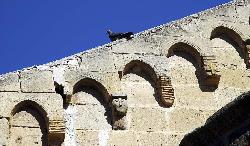Skip navigation bar and go to contents
Vivere la campagna
 Agricoltura
Agricoltura
 Ambiente
Ambiente
 Bilancio e Patrimonio
Bilancio e Patrimonio
 Consigliera di Parità
Consigliera di Parità
 Cultura
Cultura
 Formazione Professionale
Formazione Professionale
 Immigrazione/Emigrazione
Immigrazione/Emigrazione
 Innovazione Tecnologica
Innovazione Tecnologica
 Lavori pubblici e Viabilità
Lavori pubblici e Viabilità
 Lavoro
Lavoro
 Personale
Personale
 Pianificazione Territoriale
Pianificazione Territoriale
 Politiche giovanili
Politiche giovanili
 Politiche Sociali
Politiche Sociali
 Protezione civile
Protezione civile
 Pubblica Istruzione
Pubblica Istruzione
 Sport
Sport
 SUAP
SUAP
 Trasporti
Trasporti
 Turismo
Turismo
 URP
URP

Monuments, churches, archaeological sites, medieval views and dwellings, ancient shrines and hermitages, music, costumes, traditional dances, sculptures, paintings, literature, folklore…everything is art and culture in the province of Middle Campidano. The whole Province is like a small world with many faces, expressing the thousand nuances of an ancient civilization with a strong identity. The endless charms of a timeless land compose a significant heritage of little and big treasures to find out and enjoy.
 Arbus, mine and borough of Ingurtosu
Arbus, mine and borough of Ingurtosu Arbus, tuna-fishing factory of Flumentorgiu
Arbus, tuna-fishing factory of Flumentorgiu Gonnosfanadiga, mine of ‘Perda ‘e Pibera’
Gonnosfanadiga, mine of ‘Perda ‘e Pibera’ Guspini-Arbus, mine and hamlet of Montevecchio
Guspini-Arbus, mine and hamlet of Montevecchio San Gavino Monreale, the foundry
San Gavino Monreale, the foundry San Gavino Monreale, the railway station
San Gavino Monreale, the railway station Villacidro, mine of ‘Canale Serci’
Villacidro, mine of ‘Canale Serci’ Villacidro, the wash-house
Villacidro, the wash-house